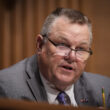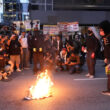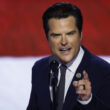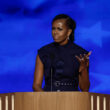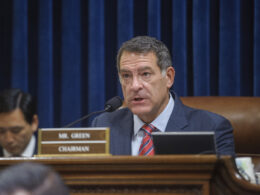The Federal Reserve’s go-to inflation gauge showed a slight easing of inflation in June and consumer spending remained solid, bolstering the argument that the Fed’s policy could be “just right” and undermining calls for an urgent rate cut.
The core personal consumption expenditures (PCE) price index, which omits food and energy costs, ticked up just 0.2 percent from May, which annualizes to a 2.2 percent increase. Over the past year, it is up rose 2.6 percent, according to Friday’s data from the Bureau of Economic Analysis. The year-over-year figure was slightly higher than expected.
Inflation-adjusted consumer spending also climbed 0.2 percent, with May’s numbers seeing a positive revision.
On a three-month annualized basis, core inflation dipped to 2.3 percent, the lowest since December. The six-month annualized rate is a still high 3.4 percent.
Overall, the PCE price index rose 0.1 percent in June from a month earlier and was up 2.5 percent compared with a year earlier.
This report signals the Fed’s tightening measures are working without causing significant economic harm. While the easing of inflation could pave the way for a potential rate cut, the robust growth in income and resilient consumer spending suggest that such a move may not be necessary at this juncture.
In separate data, the University of Michigan revealed that consumer sentiment plunged to an eight-month low in July, indicating that high prices continue to weigh on the public’s outlook despite cooling inflation rates.
Policymakers are closely monitoring so-called super core services inflation, which excludes housing and energy. This saw a 0.2 percent increase for the second month in a row, which translates into an annual rate of 2.3 percent. On a three-month annualized basis it is up 2.6 percent. The six month annualized rate is 4.1 percent. From a year ago, this metric is up 3.4 percent.
The report also highlighted a 0.2 percent rise in inflation-adjusted outlays for both services and goods. Housing and utilities led the services spending, while vehicles and recreational items boosted goods spending.
The saving rate dropped to 3.4 percent, the lowest since December 2022, hinting that consumers remain confident enough in the economy to continue to spend their income and are not engaging in precautionary saving ahead of an anticipated downturn.
